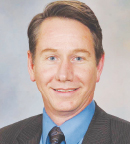Classical Hodgkin lymphoma is one of the malignancies most susceptible to treatment with monoclonal antibodies targeting the programmed cell death protein (PD-1). Nivolumab (Opdivo) has been approved by the U.S. Food and Drug Administration (FDA) for use in patients with relapsed/refractory disease, whereas pembrolizumab (Keytruda) is still in clinical trials for these patients. At the 2016 American Society of Hematology (ASH) Annual Meeting & Exposition, investigators for CheckMate-025 and two KEYNOTE trials reported data confirming the drugs’ impact in this disease.

Hodgkin lymphoma may have a genetically driven vulnerability to PD-1 blockade. If these drugs [PD-1 inhibitors] don’t work in this disease, they are not likely to work in any cancer.— Craig H. Moskowitz, MD
Tweet this quote
Craig H. Moskowitz, MD, of Memorial Sloan Kettering Cancer Center, New York, explained that both anti–PD-1 drugs are “primed to be active” in classical Hodgkin lymphoma because genetic alterations in this cancer (including near-universal amplification at 9p24.1) lead to overexpression of the PD-1 ligands (PD-L1/2). “Hodgkin lymphoma may have a genetically driven vulnerability to PD-1 blockade. If these drugs don’t work in this disease, they are not likely to work in any cancer,” he suggested.
KEYNOTE-087
Dr. Moskowitz presented the primary endpoint analysis of the phase II KEYNOTE-087 trial.1 The study evaluated single-agent pembrolizumab (200 mg every 3 weeks) in three cohorts of patients with relapsed/refractory disease: cohort 1 (n = 69), “classic patients” who progressed after autologous stem cell transplant (ASCT) and subsequent treatment with brentuximab vedotin (Adcetris); cohort 2 (n = 81), patients who failed to respond to salvage chemotherapy, were ineligible for ASCT, and failed to respond to brentuximab vedotin; and cohort 3 (n = 60), patients who failed to respond to ASCT and were not treated with brentuximab vedotin after transplantation.
“Cohort 3 is different. Patients were less heavily pretreated because they may not have had brentuximab posttransplant (but could have received it as part of salvage chemotherapy),” explained Dr. Moskowitz. “The other cohorts were typical of the poor-prognosis population—heavily pretreated (median of four prior regimens), with many refractory, and the majority having received transplants.”
The overall response rate by blinded independent central review was 69%, with 22% being complete responses. The median time to response was approximately 3 months.
The waterfall plot “looks fantastic,” with 90% of patients showing evidence of tumor reduction, Dr. Moskowitz noted. The median time to disease progression and the median duration of response have not been reached (exceeding 6 months in most patients). “As we wade along, these numbers always get better,” he added.
PD-1 Blockade in Classical Hodgkin Lymphoma
- Nivolumab is approved for relapsed/refractory classical Hodgkin lymphoma, and pembrolizumab is expected to be approved for this indication soon.
- These agents produce high response rates (60% to 70%) and high rates of complete response (20% to 30%) in various cohorts of patients, including those with and without prior brentuximab vedotin exposure or transplant, and patients with primary refractory disease.
- Results from KEYNOTE-013, KEYNOTE-087, and CheckMate 205 have confirmed the impact of checkpoint blockade in this malignancy.
Although the cohorts had received different prior treatments, their response rates were similar (64% to 74%), as were complete responses (20% to 25%). Most responses were observed upon first re-staging, but delayed complete responses were also seen in some patients. In cohort 1, most complete responses were evident at first assessment, and few patients subsequently converted from a partial to a complete response. In cohort 2, on the other hand, some patients converted “down the road,” an observation that oncologists should consider when managing patients, he said. In cohort 3, the least heavily pretreated group, complete responses were “scattered” across the treatment course, but most were seen early.
Responses were observed in 79% of patients with primary refractory disease (23% complete responses), reported Dr. Moskowitz, and in 68% of patients relapsing after at least three lines of therapy. The high rate of response among patients with primary refractory disease demonstrates “that even in this least-favorable patient population, we see the same benefit,” he commented.
Treatment-related adverse events occurred mostly in terms of hypothyroidism (12.4%), pyrexia (10%), and fatigue (9%). Grade 3/4 toxicities were observed in 11%, mostly neutropenia and diarrhea. Nine patients discontinued the study because of toxicity. Pneumonitis and colitis were “minimal” in this data set, occurring in 3% and 1% each, he said.
Could some pembrolizumab-treated patients be “cured”? Dr. Moskowitz maintained it is too soon to know. “I think a number of us have patients who received nivolumab or pembrolizumab and achieved complete responses. They have been durable, and patients have not been re-treated. Does this mean they are cured? I hope so! But at this point, that’s a leap of faith.”
An ongoing global phase III study is comparing pembrolizumab with brentuximab vedotin in the palliative setting.
KEYNOTE-013

It’s clear you don’t need to achieve a radiographic complete remission to derive durable benefit with these agents [PD-1 inhibitors].— Philippe Armand, MD
Tweet this quote
Updated results for the classical Hodgkin lymphoma cohort of KEYNOTE-013, which evaluated pembrolizumab in patients who progressed after brentuximab vedotin, were presented by Philippe Armand, MD, of the Dana-Farber Cancer Institute, Boston.2 All had prior exposure to brentuximab vedotin and were either refractory to the drug or had relapsed; patients had also relapsed after ASCT (74%) or were ineligible for transplant (because of chemotherapy refractoriness; 26%). Patients received pembrolizumab at 10 mg/kg every 2 weeks.
Dr. Armand presented the results for 31 heavily pretreated patients (median of 5 prior lines of treatment), followed for a median of 29 months, making this “the longest reported follow-up of PD-1 blockade in classical Hodgkin lymphoma,” he noted.
The objective response rate by blinded independent central review was 58%, including 19% complete responses. Responses were slightly lower in patients who were transplant-ineligible and had received prior brentuximab vedotin (38%). As in KEYNOTE-087, response rates remained high (62%, with 31% complete responses) in patients with primary refractory disease.
“With additional follow-up, now nearly 2.5 years, responses (including partial responses) seem durable, with many lasting close to or more than 2 years. It’s clear you don’t need to achieve a radiographic complete remission to derive durable benefit with these agents,” observed Dr. Armand.
All but one response emerged within 5 months of treatment. At data cutoff, 11 of 18 responders remained in remission, whereas 7 progressed, at a median of 14 months from enrollment. Duration of response was not reached; 70% of responses lasted at least 12 months, and 17% have lasted at least 2 years. At 12 months, median progression-free survival was 11.4 months, 48% of patients were progression-free, and 87% of patients were alive.
“The safety profile was maintained,” Dr. Armand. Treatment-related adverse events were observed in 68%, including mostly hypothyroidism (13%) and diarrhea (19%). Six patients (19%) had grade 3/4 toxicities.
Dr. Armand concluded that pembrolizumab has “high activity” in this heavily pretreated population. Responses appear durable, with many persisting more than 1 year. “We know that with checkpoint blockade in solid tumors, a subset of patients derives very long clinical benefit and remains in remission at 5 to 10 years. The question is whether there is also a subset with classical Hodgkin lymphoma who can have this duration of remission, and, if this subset exists, how long this remission can last. If so, one of our goals is to identify these patients ahead of time.”
CheckMate 205

John Timmerman, MD
Nivolumab is being evaluated as monotherapy in CheckMate 205, an international, multicohort, phase II study of patients with classical Hodgkin lymphoma who progressed after ASCT. At the 2016 ASH Annual Meeting, John Timmerman, MD, of the University of California at Los Angeles, presented the 12-month follow-up of cohort B and the primary results for cohort A.3
“With extended 12-month follow-up, longer remissions are noted following nivolumab monotherapy in relapsed classical Hodgkin lymphoma, including durable partial responses in heavily pretreated patients,” Dr. Timmerman reported. “In patients previously treated with brentuximab vedotin and in those who were brentuximab-naive, the high objective response rate of 68% is consistent with previous reports.”
Cohort B included 80 heavily pretreated patients who had received brentuximab vedotin after disease recurrence following ASCT. Cohort A enrolled 63 patients who relapsed after ASCT and were naive to brentuximab vedotin. All patients received nivolumab at 3 mg/kg intravenously every 2 weeks. The primary endpoint was objective response rate by independent radiologic review.
After 12 months’ minimum follow-up, in cohort B the response rate was 68%, including an 8% rate of complete response. Although the 6 months’ follow-up had documented a median duration of response of 8 months, with longer follow-up this was prolonged to 13 months. The median duration of complete response was not reached, and the median duration of partial response was 13 months. A reduction in tumor burden was achieved by 95% of evaluable patients, Dr. Timmerman reported.
Median progression-free survival was 15 months with longer follow-up, compared with 10 months at the earlier analysis. The 12-month progression-free survival rate was 55%, and the 12-month overall survival was 95%.
“Median progression-free survival was prolonged by 5 months with extended follow-up,” Dr. Timmerman reported. “Durable responses and progression-free survival were seen regardless of depth of response, including in patients with partial responses and stable disease.”
Based on these data (in cohort B), nivolumab was approved by the U.S. FDA for the treatment of Hodgkin lymphoma relapsing after autologous stem cell transplant and brentuximab vedotin in May 2016.
The results for cohort A, patients progressing after ASCT who had not received brentuximab vedotin, were presented for the first time at the 2016 ASH Annual Meeting. The objective response rate in this group was also 68%, with 22% being complete responses; stable disease was achieved by 21%, and only 11% of patients progressed. The median time to response was 2 months, and the median duration of response was not reached after a median of 14 months’ follow-up. Tumor burden was reduced in 93% of these patients.
As of the data lock in June 2016, median progression-free survival was not reached in complete or partial responders and was 8 months in patients with stable disease. At 9 months, progression-free survival was 68%, and overall survival was 97%.
Transplant After PD-1 Blockade?
Dr. Timmerman noted that an important question pertains to the safety and outcomes of patients who undergo transplant after receiving anti–PD-1 agents. He reported safety outcomes for 17 patients in CheckMate 205 who received allogeneic stem cell transplant, noting that acute graft-vs-host disease developed in 5 patients in cohort B (1 grade 3/4) and in none of the cohort A patients, and there were no deaths due to disease progression among patients who received these transplants.
In the KEYNOTE-013 study, 13 patients received allogeneic transplant (3 also received autologous transplant) after pembrolizumab. Of the 13 patients, 8 had responded to prior pembrolizumab. There were no reports of severe acute graft-vs-host disease or treatment-related mortality.
“The outcome of allo-transplant subsequent to this therapy is an important question,” Dr. Armand commented. “Also, can we use responses to PD-1 blockade as a bridge to autologous transplant? Most of the time, these patients have been so heavily pretreated that if they go to transplant, it’s allogeneic, but we don’t really know….”
How to optimally incorporate transplant after PD-1 blockade remains an open question. “We discuss this a lot,” admitted Dr. Armand. “From the data from this study and two other cohorts, where we looked at patients receiving allo-transplant after PD-1 blockade, my sense is there is still a risk of early immune-related toxicity; however, treatment-related mortality is relatively low, and outcomes of allo-transplant are quite good—1-year progression-free survival was over 70% in a recent cohort—but we don’t know how to assess durability. We cannot use achievement of complete response to determine which patients should go to allo-transplant.”
While acknowledging his decisions are based on “very little data,” Dr. Armand’s current practice is this: For patients in remission after PD-1 blockade, he postpones transplant, for several reasons. “One, we have seen that we can often salvage the relapses after PD-1 blockade with chemotherapy,” he explained. “Two, patients who are now coming to PD-1 blockade tend to have received less chemotherapy, so they have more salvage options. And three, the progressions we see after PD-1 blockade tend to be slow progressions. Patients don’t come in now with rip-roaring disease, so if you have been waiting to do an allo-transplant, you can do it at that point.” ■
Disclosure: Dr. Moskowitz has served as a consultant for Celgene, Genentech, Merck, and Seattle Genetics and has received research funding from Merck, Seattle Genetics, and Pharmacyclics. Dr. Armand has received research funding from Sequenta, Otsuka, Sigma Tau, Roche, Tensha Therapeutics, Merck, and Bristol-Myers Squibb and has served as a consultant for Infinity, Merck, and Bristol-Myers Squibb. Dr. Timmerman has received research funding from Bristol-Myers Squibb, Kite Pharma, Valor Biopharmaceuticals, and Janssen and served as a consultant and/or received honoraria from Seattle Genetics, Genmab, and Celgene.
References


